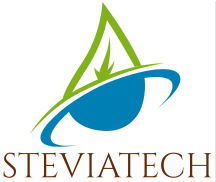The next-generation Sugar
Stevia having it’s scientific name stevia rebaudiana bertoni is a perennial herb known for its sweetness worldwide. It is primarily an industrial crop used to produce stevia-sugar(or sweetener), a natural sweetener and a healthy alternative to regular sugar and artificial sweeteners. Stevia-sugar is industrially produced from dry stevia leaves by Extraction and Refining of dry stevia leaves to get stevia-sugar/sweetener, commonly known as high intensity sweetener(HIS) and is about 250-350 times sweeter than regular sugar.
The global stevia-sugar market is growing at a CAGR of 10-15% depending on the region. Japan having replaced about 40% of its sugar consumption with stevia, & globally stevia sugar expected to replace 20% sugar in the next 15-20 years. Food & Beverages industry in Europe & USA too are showing similar trends in reducing sugar consumption & replacing with this healthy and safe natural alternative

